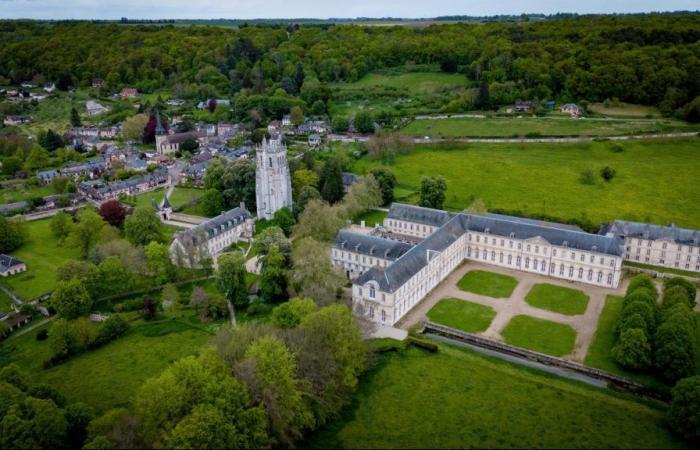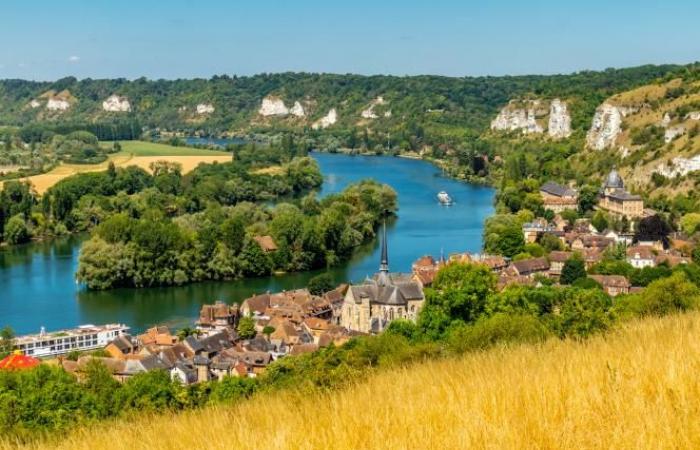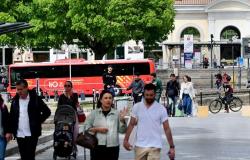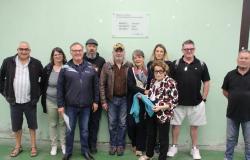It was only in 1945 that the abbey, in very poor condition, was transferred to Historic Monuments. Benedictine monks settled there in 1948 with the ambition of reviving monastic life there. Renovated by the State from 1949, the place is managed by the Center for National Monuments. After the building was classified as a “Historic Monument” in 1976, in 1993 came the ambition to protect the entire valley. A job that will take more than 30 years: on April 21, 2024, the decree was published which formalizes the “historic site” classification, as less than 2% of French heritage.
Bec-Hellouin is truly built around its abbey. Very quickly, the monks needed labor and encouraged the establishment of the village. A former railway line, which linked Évreux to Honfleur from 1889 to 1969, was transformed into a greenway. Passing through Harcourt, the greenway connects Évreux to Bec over 40km.
In its latest issue which it devotes to the Eure, the Vieilles Maisons Françaises association focuses on the oldest constructions on the site, dating from the 15th century: “emblematic of the Bec with its powerful Anglo-Norman style stature punctuated of hooked pinnacles, the Saint-Nicolas tower, built from 1467, was originally adjoining the abbey church, for which it served as a belfry to house very heavy bells.
2. Marais-Vernier, in the heart of the Normandy Camargue
Located in the last bend of the Seine, the Marais-Vernier is a unique landscape in the Normandy countryside. Dug into the bed in an ancient meander of the river, over 4,500 hectares, the site is home to a unique ecosystem in the north-western plains of Europe.
The balance between water and land creates a privileged habitat for a multitude of animal and plant species. Wildlife is abundant there: wild ducks, migratory birds, swans, frogs and Camargue horses populate its ponds and reed beds.
What makes Marais-Vernier so special is its panoramic observation tower. At sunrise, under a light mist, the marsh gently awakens, offering a magical spectacle to visitors who have taken the trouble to shorten their night.
Man-Nature co-construction
The Route des Chaumières, which crosses the Marais-Vernier for 53 kilometers, is particularly popular with tourists who often take it by bike. Lined with traditional thatched-roof houses, it mixes green meadows, apple orchards and typical Norman farmhouses.
The Marais-Vernier is the largest peat bog in France. If Men have often tried to domesticate it, notably the Dutch in the 17th century, the territory remains untamed, with a strong particularity: this Man-Nature coconstruction which brings a considerable architectural heritage to an area classified as a wetland of international importance as of the Ramsar Convention.
3. Bird’s-eye view of Les Andelys
Famous for its emblematic Château-Gaillard, built by Richard the Lionheart in the 12th century, the town immerses us in the region’s medieval epic. Built on a rocky promontory overlooking the Seine, this masterpiece of military architecture bears witness to the rivalry between the kings of England and France in the Middle Ages and even has its macabre history: the imprisonment of the two daughters-in-law of Philippe Le Bel for adultery within the building, where the mistreatment they suffered led them both to death.
Cultural festivals and chalk cliffs
The town of Andelys is also characterized by its rich religious heritage, with the majestic Gothic Saint-Sauveur church, whose construction spans several centuries. Nearby, the charming Petit Andely district offers a maze of cobbled streets lined with half-timbered houses.
Over the centuries, Les Andelys has witnessed many historical events, from the battles of the Hundred Years’ War to the French Revolution. Today, it attracts visitors with its natural landscapes, bustling markets and cultural festivals. Outdoor enthusiasts can enjoy the many activities offered in the surrounding area, such as hiking, kayaking on the Seine or exploring the chalk cliffs that line the valley.
4. Pont-Audemer, the other Norman Venice
From one street to another, we no longer count the number of times we cross the Risle which has made Pont-Audemer economically successful. Because the one that is sometimes nicknamed “Norman Venice”, a title that it disputes with Lyons-la-Forêt, has a rare industrial heritage.
If it has preserved its half-timbered architecture which dates from the Middle Ages, it is above all the old tannery town, cleverly built around the canals which were used for leather working.
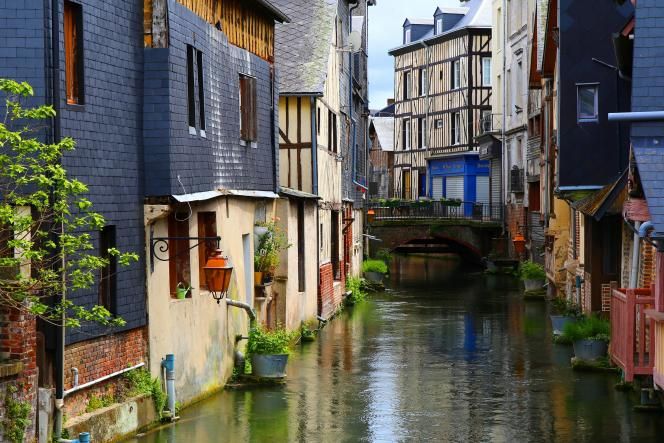
The central place of water
Made up of numerous alleys and alleys, which open onto streams, “Pont-Audemer constantly reminds us that water does not have a central place by chance! Some 18th century houses are absolutely sublime: the masters lived in the private mansions that line the streets,” relates Élise Karlin, editor-in-chief of the VMF magazine in which she writes an article dedicated to the city. “In the courtyard were housed the workers who, every day, worked as close as possible to the water, in the workshops in the backyard, where the industry was located. »
Thanks to the Risle, which flows into the Seine very close to the mouth of the river, Pont-Audemer had direct access to the sea, which earned it this commercial success. And “We came from Northern Europe to train in tannery, saddlery, and later in stationery.” Even today, the city remains a strong commercial center and claims the title of “largest open-air shopping mall” in Eure.
VMF defends the heritage of architecture and gardens
Since 1959, the VMF magazine has published, six times a year, an issue dedicated to each department. After a previous issue in 2011, the May and June issue, available on newsstands or on vmfpatrimoine.org, once again puts the Eure department in the spotlight. “We try to find emblematic subjects of the department’s heritage,” explains the editor-in-chief of the VMF magazine, Élise Karlin. “These are subjects that everyone knows but which we will treat in depth, but also lesser known subjects, residences which are not open to the public or a little-known heritage in the department”.

